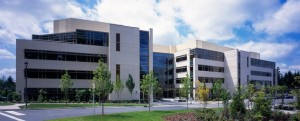In the midst of the astonishing sale of the Washington Post to Jeff Bezos, a related announcement has received less attention: the newspaper will be getting a new home. Developers have been invited to make proposals, and while the final choice has not yet been made (and given the sale of the paper, who knows?), some of the alternatives have been made public. The architects include the usual megafirm suspects, and the designs are equally predictable–buildings for anybody, anyplace. What a difference when the Chicago Tribune held a well-publicized architectural competition in the 1920s for its home, and Eliel Saarinen, Walter Gropius, and Bruno Taut were among the entrants. That was a time when corporations sought to present themselves to the public through adventurous architecture–think Woolworth, Singer, Chrysler, RCA. Sometimes this strategy backfired (PanAm, CBS, AT&T), but when it succeeded it produced masterworks such as Wright’s Johnson Wax, Mies’s Seagram, SOM’s Lever House, and Saarinen’s General Motors Technical Center and the John Deere headquarters. Pepsi Cola, Bell Labs, IBM, and Union Carbide built exceptional buildings, too. In fact, a list of leading mid-century corporate patrons reads like the Fortune 500. One would be hard put to compile a comparable list today. None of our largest new corporations–Google, Microsoft, Intel, Dell, Amazon–would be on it. Exceptions: Facebook has hired Frank Gehry to design an addition to its campus, and Apple is building a high-tech donut designed by Norman Foster. But most of today’s technology companies appear content to occupy the safe architectural middle ground. Is it that buildings really don’t matter to them? Or are they sending the message: we’re not elitists, we’re one of the crowd, we’re just like you. Mr. Bezos, the new boss, could change that.


